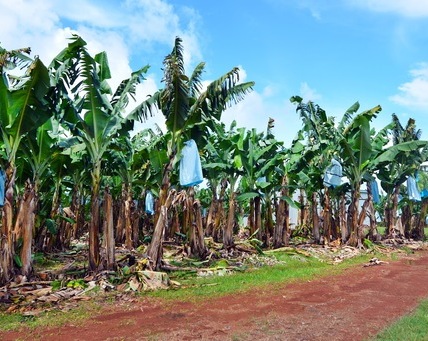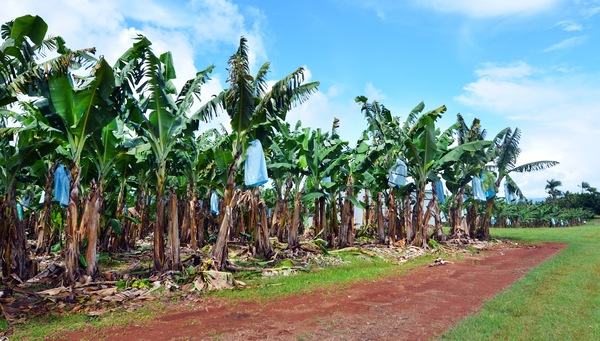The History of Bananas in Australia
Today, the humble banana is the second best selling supermarket product in Australia, after berries. The banana industry is also the biggest horticultural industry in the country..
Between 2017 and 2018, it was valued at $434 million. Much of the crop is grown on banana farms for domestic distribution. However, there are plans in place to increase Australia’s export of bananas. The story of the banana in Australia has come a long way since it started in the 19th century.
Key points
- The banana industry in Australia is valued at more than $434 million
- Chinese migrants brought banana plants to Australia when they came to work in the goldfields
- Most of the country’s banana crop is currently produced in the tropical growing regions of north Queensland.
- Cavendish plants make up 95% of the total banana production
Need a Quote?
RECOMMENDED ARTICLE
The History of Almonds in Australia – Entegra Signature Structures
Inside Red Rich – Fruit Packing Shed
The first bananas in Australia
The history of the banana in Australia is thought to have begun in the early to mid 1800s. Chinese migrants brought banana plants to Australia when they came to work in the goldfields. Banana plants were also brought from Fiji by sugar cane cutters.
The first plants were mostly grown ornamentally, firstly in Carnarvon in Western Australia and then in north Queensland. This growing for ornamental purposes meant that the first bananas traded in Australia were actually imported from Fiji to Sydney.
 RECOMMENDED ARTICLE
RECOMMENDED ARTICLE
The growth of the banana industry
Despite this early slow start, it was not long until commercial banana plantations were created by banana growers in Australia. This provided a potentially profitable alternative to wild bananas. The earliest of these plantations were created by Chinese goldfield workers.
They took banana plants with them to the coastal regions of Cooktown, Cairns and Innisfail. They created plantations where they also grew sugarcane and pineapples.
Herman Reich also created a commercial banana plantation in Coffs Harbour, in 1891. Bananas are still grown in the area to this day.
As the plantations grew, trade with southern colonies began. Fruiterers in Sydney sold bananas to other areas of the country including Melbourne, Adelaide and Perth. This helped to spread the popularity of the fruit around the country.
This led to bananas also starting to be grown in the Gympie area of Queensland. This soon became the biggest banana-growing area of the country, from 1918 to the 1930s.
At this time, tariffs on imported bananas helped to encourage the production of the fruit in Australia. This happened because domestic production represented the best financial opportunity. As a result of the increase in banana production, the growth of favourite varieties, like the Cavendish banana, increased in popularity.
The banana industry today
The Cavendish remains a popular variety when it comes to growing Australian bananas and the industry has continued to flourish.
It has survived the threat from plant diseases that were prevalent in the early years. The development of improved farm management and better biosecurity controls has helped with this.
The main growing regions today are Queensland, northern New South Wales and Western Australia. This includes the area around Coffs Harbour which has been a banana-growing region for over a century.
The region has seen a drop in banana production over recent years. However, banana growing is now firmly back on the agenda.
Most of the country’s banana crop is currently produced in the tropical growing regions of north Queensland. Other tropical growing regions in the country include areas in the Northern Territory and the north of Western Australia.
Bananas are also grown in subtropical areas including northern New South Wales, south east Queensland and Carnarvon in Western Australia.
All bananas that are sold in Australia are grown in the country. This helps to eliminate the risk of plant pests and disease. These dangers could be brought in to the country if bananas were imported.
In summary
Today, there are around 13,000 hectares of bananas grown in Australia. Almost 95% of these bananas are grown in the Queensland area. This area of plantations is not as large as in a major banana growing area like Latin America. However, this does not stop bananas from being a highly significant part of the Australian horticultural world.
A lot has changed since the 19th century when Chinese workers brought banana plants to Australia. This action started the country’s history as a banana producing nation. One thing that remains the same is the popularity of the Cavendish banana. This means that Cavendish plants make up 95% of the total banana production in the country.
There are still threats to banana production, from issues such as disease. However, overall, the industry is in good health and bananas remain a very popular fruit.
RECOMMENDED ARTICLES
The History of Almonds in Australia – Entegra Signature Structures
Fruit and Vegetable Prices To Rise in Australia – Entegra Signature StructuresFarmer
Memes – Entegra Signature Structures
The History of Backpackers Fruit Picking in Australia – Entegra Signature Structures
https://australianbananas.com.au/Pages/all-about-bananas/the-banana-story


 RECOMMENDED ARTICLE
RECOMMENDED ARTICLE